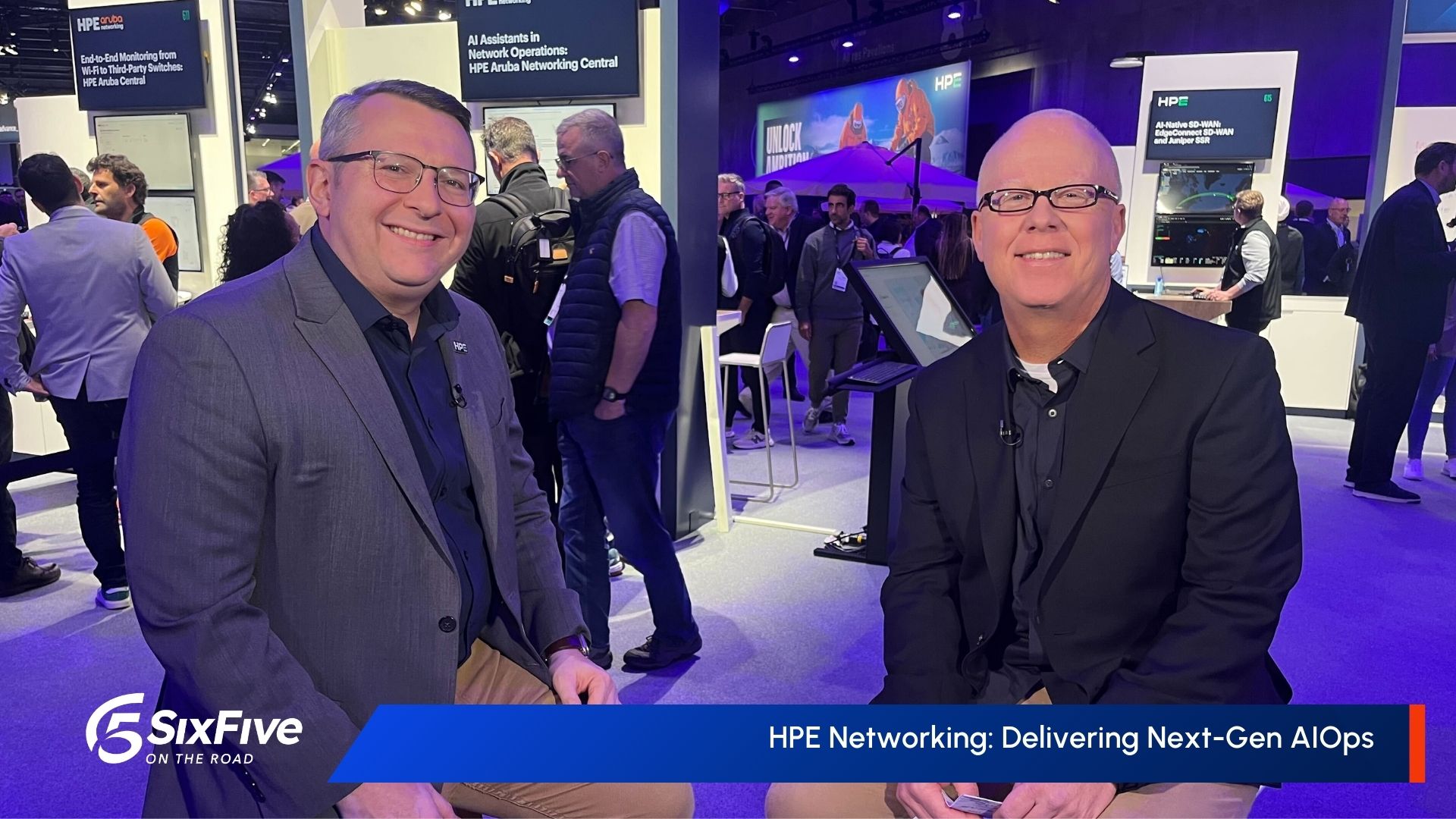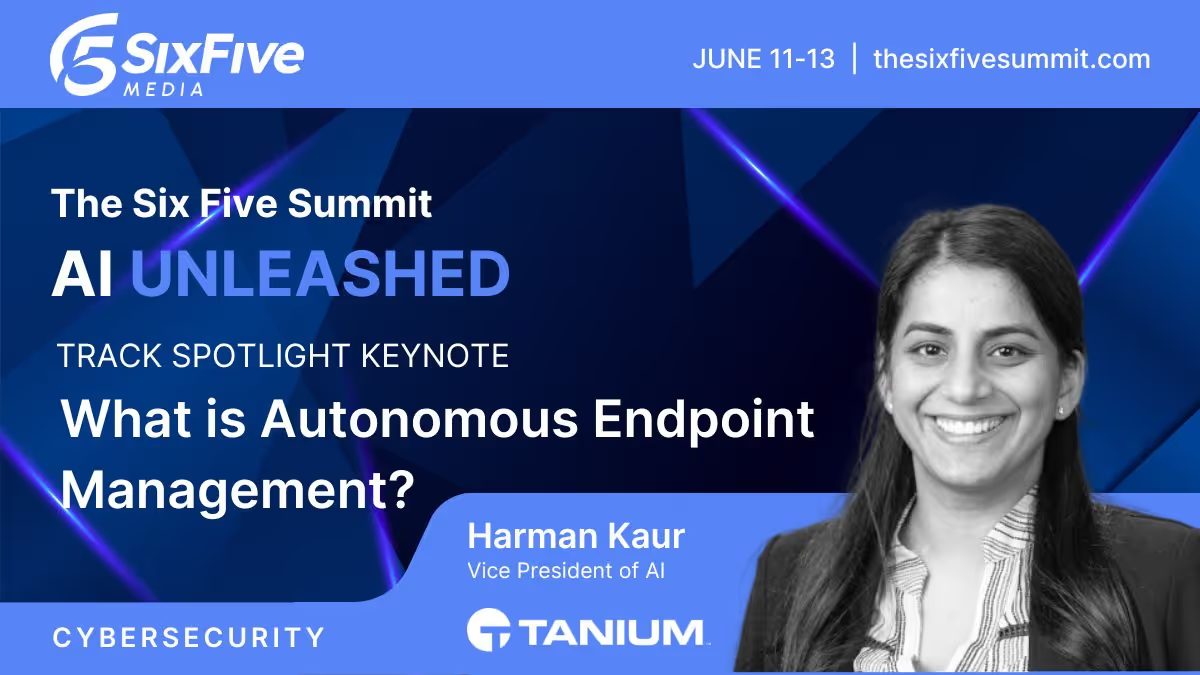Fast-Tracking Mission-Critical Workloads to the Cloud with Oracle and AWS - Six Five Media
Ruba Borno and Karan Batta delve into the innovative Oracle Database at AWS offering, exploring its impact on accelerating cloud migrations for enterprise workloads.
How are industry giants Oracle and AWS joining forces to redefine enterprise cloud migration and deployment? ☁️
Host Daniel Newman is joined by two pivotal leaders: Karan Batta, SVP, Oracle Cloud Infrastructure at Oracle, and Ruba Borno, VP, AWS Specialists & Partners at AWS, as they chat about the strategic collaboration poised to revolutionize how businesses move and manage their mission-critical workloads in the cloud.
Key takeaways include:
🔹Their Strategic Alliance: Explore the origins and powerful initial response to Oracle Database@AWS, revealing the forces that pushed Oracle and AWS to create this unique offering for enterprise workloads.
🔹Seamless Procurement & Value Creation: Walk through the streamlined AWS Marketplace experience tailored for Oracle Database@AWS, highlighting unique advantages like leveraging existing AWS commitments, Oracle's BYOL (Bring Your Own License), and Support Rewards programs.
🔹Zero-ETL Integration for Advanced Analytics & AI: Guests share the transformative potential of zero-ETL integration between Oracle Database@AWS and Amazon Redshift services, dramatically enhancing data utility across AWS’s powerful analytics and AI services.
🔹Strategic Expansion & Migration Pathways: Understand the meticulous planning behind the regional availability of Oracle Database@AWS, aiming for broad expansion across the Americas, Europe, and Asia-Pacific, and learn how customers can initiate their seamless migration to this unified environment.
Watch the full video at Six Five Media, and be sure to subscribe to our YouTube channel, so you never miss an episode.
Or listen to the audio here:
Disclaimer: Six Five Media is for information and entertainment purposes only. Over the course of this webcast, we may talk about companies that are publicly traded, and we may even reference that fact and their equity share price, but please do not take anything that we say as a recommendation about what you should do with your investment dollars. We are not investment advisors, and we ask that you do not treat us as such.
Daniel Newman: Hey everyone, Welcome to this Six FIve Media Virtual Webcast. Daniel Newman here, CEO of The Futurum Group. Excited for this great conversation. We've got Oracle and AWS and we're talking fast tracking mission critical workloads to the cloud with Oracle and AWS. I've got Karan and Ruba here joining me. Welcome to the show. Thank you both so much for being part of today's event. So, Karan, I want to start off with you. Oracle database at AWS. It was announced last September at Cloud World. Talk to me a little bit about that initial response, fonts and what really drove Oracle. You know, the history was not always big on partnerships. These are two companies that weren't always, you know, super, big on multi clouds. And now you're seeing it all coming together and it's looked really good so far.
Karan Batta: Well, number one, I think most customers are like finally, right? But I think at the end of the day it's really about what the customers want, right? Most of our customers, OCI will be 10 years next year, so it'll be like alive a decade. But AWS has been around forever, right? Like almost 20 years, I believe. Right. So customers have already picked the cloud, right? They've already picked their first cloud. They've invested a lot of time and effort into getting their workloads in there. And a lot of those customers are also putting all their data in Oracle database. And so we want to make sure that they have a first class experience in whatever cloud of their choice. Right? And a lot of our customers were coming to us and saying, hey, look, we've already invested so much energy, effort, operational maintenance, all these kinds of things on AWS. We want to make sure that we can run our database natively in AWS, but also get all the benefits of it, right? So that means things like all of the performance characteristics, things like Exadata, things like the resiliency feature sets, all these new features, Even things like Oracle 23 AI or new database capabilities. We want all of that in AWS and we want to be able to pay for it using AWS commitments. We want joint support, we want all the native features to be Integrated, you want to be able to use local logging and networking features. We want it to feel like we're using an Oracle database service from within AWS. It was a first class service and essentially that's taken us what, like five, six years to get here. But we're finally here now, right? We announced GA with two regions in the US so customers can deploy multiple sites and then we've got multiple more regions coming too. So it's been amazing actually working with the AWS team and we're super excited for the opportunity here for customers.
Ruba Borno: I think that was really well put, Karan. And then maybe just to add to that, we've had customers who've been asking for a simple way to combine their data from Oracle workloads with AWS services. And I think that what prompted us to work together now, especially in the era of generative AI and agentic, is that customers want to take advantage of AWS's AI and machine learning capabilities and services like Amazon Bedrock, for example. And so with the Oracle database at AWS that you referenced, which we announced last year, customers can easily and quickly migrate and run their Oracle Exadata workloads within AWS with minimal changes. So what's amazing about this is that if you're a customer, you don't have to rewrite your applications to migrate. That is huge. So your critical apps, and frankly a lot of this is being used for mission critical apps run the same on Oracle database at AWS as they do on premises and in fact better. If you aren't currently leveraging Oracle Exadata, you get the scale, security and resiliency of AWS. So we're really excited about this, not just for customers who can now quickly be able to migrate, but also customers who have yet to migrate to the cloud, having a simplified path to the cloud. We're excited about the modernization capabilities that this is giving to customers and we're seeing customers that have been using the preview and the limited availability release that we had last year getting performance 20 to 30% faster and better performance. So hugely exciting and really glad to see the results that we can now talk about.
Daniel Newman: Yeah, the market feedback that we had had was that this was a necessary partnership. So, you know, seeing it come to fruition was very positive. Of course, you know, there's always a bit of every company that has a similar service that is always a bit like, where are we going to protect our fiefdoms? Where do we want to make sure we're collaborating? But this really matches what Enterprises look like. And you know Karan's point about having chosen clouds and yes, maybe there are second and third and fourth, but it takes a lot of time in enterprises. We're seeing it with AI right now, how fast they're moving versus kind of in some ways how fast we see some of the consumers move. I mean, enterprises have all the technical legacy and debt and it takes time. So being able to bring together key elements and make them work is really powerful. Karan, this has been in preview for some time. Let's talk about feedback as this starts to roll out to scale. Are you seeing certain industries, are you seeing certain customer archetypes? What are the drivers and where are you seeing this partnership really taking off?
Karan Batta: Yeah, I mean, I think Aruba actually mentioned this pretty well. One of our core, I would say pillars of the offering is that customers really don't need to change anything. A lot of our customers today are deploying these Oracle databases on prem on x86 machines or they're deploying stuff on Prem Exadata. They want to be able to literally just move it as is into the cloud. And so that's what we offer with Exadata service. Of course there's the future of Exadata with exascale that really sort of makes it much more scalable, which they can then migrate to at a future date. But essentially the initial migration into the cloud to get all the benefits of the cloud, whether it's pay per use, whether it's the resiliency, the availability, the operations side of it, they should just be able to get that offering right there and then. And in most cases, what we found from the preview is almost sort of anticlimactic in the sense that it's just easy. Like, you know, when you show, when you show this thing off as a demo, as an example, it's like you log into AWS, you create an Exadata and then you create a database. It's pretty boring. And that's what it's supposed to be, it's actually supposed to be really easy for customers to do that. And then they can use the backup and restore functionality across Oracle databases to actually migrate that over. So it just kind of works. And under the covers, it's just the same OCI technology that we have that we use for our customers as an example. So, you know, from our perspective, there's no real delta and customers have kind of noticed that and it's been very, very simple and easy for them. Where we found a lot of customers gravitating towards this is financial services retail. Most of the financial services customers, the big banks are all using Exadata on prem. Most of the retail customers are using Exadata on prem with gigantic amounts of Exadata storing some of the most critical information. So that's where we've seen some of the core customer base coming from. And then of course as time goes by that will expand as we open up in GA.
Ruba Borno: I'll just add one thing which is, I mean we knew we were working backwards from a customer need, but the customer response has been incredible and I would say it's actually more than either company anticipated. And Karan mentioned financial services insurance, but we've had customers across all enterprise, multinational and regulated industries, not just banking and insurance, but also energy and telco. So I think what's been great and validating for us has been the customer response and their enthusiasm for this.
Daniel Newman: So Ruba, I want to stick with you for a second here. You talked a little bit about, you know, the customers wanting to consume the AWS AI ML services. You know AWS has built a very early and strong moat in ML. I mean forever. This has been a lot of customers turned to you adding, you know, having Oracle database at AWS, Zero-ETL integration using Redshift services. How is this sort of helping your customers basically being able to use the Oracle data with the AWS analytics and AI services that you talked about?
Ruba Borno: Yeah, so the 0ETL integration feature is a really important one. To double Click on this Zero-ETL integration with AWS analytics services. It really makes it easy for customers to unify data across Oracle and aws. So it eliminates the traditional extract transform load process that typically requires really complex coding and building self managed data pipelines. So this process is now fully automated. It allows data to seamlessly move from Oracle databases into AWS services. And why does this matter? And I mentioned the AI ML and generative AI and Agentic. This helps customers break down data silos and use their business data to get deeper insights about their business. Get new innovation using AWS analytics, machine learning and those gen AI services like I mentioned, Amazon Bedrock. So I'll give one example. A financial services company now was able to combine near real time transactional data that was in their Oracle databases with customer interaction data that was in AWS. And they're using that to get comprehensive fraud detection dashboards. This was not available before this partnership. Being able to look across both providers, they weren't able to do that. And so now, with this zero ETL capability, they can look for patterns across these disparate data sets within seconds. Karan mentioned also customers in the retail side, retailers can leverage the same integration to automatically feed data feeds like inventory data from Oracle systems into AWS. And then they're able to use ML models to do things like dynamic pricing strategies or personalization for their customers, which is a really exciting capability that more and more customers are using in retail and beyond.
Karan Batta: Yeah, and to add to Aruba actually the goal here was to make it extremely easy for developers, existing AWS developers, to pull in the Oracle data. The world's data lives on Oracle databases. So having access to Oracle data from all of the portfolio of Amazon's PaaS services was really, really critical. And what we've actually done is we actually collaborated on the engineering side to actually give access to some of the lower level APIs on the database so that customers can directly point to their Oracle database. As an example, with the AI stuff, you can actually point to the Oracle database from within some of these services as a rag instance, or you're able to actually do some interesting backup and restore capabilities, or you're able to pull that data into some analytics services. But essentially the core functionality is something that customers are already doing on prem with some of their other systems. We actually expose that functionality to AWS so that they can integrate it into their PaaS services. So again, this kind of goes to the broader sense of engineering alignment across AWS and Oracle, where it's not just these PaaS services, it's across the entire stack, identity, security, operations, you know, observability monitoring across the board.
Daniel Newman: So let's pivot a minute to the, you know, to the consumption side of this. For the last few minutes of this conversation, AWS Marketplace is where a lot of, you know, these services get consumed. Talk Ruba a little bit about that experience, you know, with AWS Marketplace for Oracle Database at AWS, the practicality of it, their ability for your customers to use AWS commitments, Oracle licensing programs and support, you know, rewards. Talk about it in practice, how this all works.
Ruba Borno: Well, it's a continuation of the technology partnership. Now, Karan mentioned how deep the technology partnership goes and it's across security and the deep engineering partnership. The benefits of this partnership actually go beyond the technology as well. So when working together with the Oracle team, we took into account multiple elements of the customer experience and customers can use their existing AWS commitments and Oracle license benefits, including bring your own license and their discount programs such as Oracle Support rewards. So that's on one side of the relationship. And with Oracle Database at AWS now available in AWS Marketplace, we have a vision to make AWS Marketplace the go to destination for IT. And so that can help simplify the procurement process for a lot of customers. It helps them save time comparing and procuring technology. And when, as part of this partnership, customers can apply their AWS spend commitments to acquiring Oracle Database at AWS. Now you mentioned a lot of customers are procuring things from AWS Marketplace. I'll share one stat with you that we're pretty excited about and proud of. More than 99% of AWS's top 1,000 customers have had at least one active AWS marketplace subscription. And so that just gives you a sense that this is something that a lot of our customers are using. And so it was really important for us to include this AWS Marketplace as part of this partnership to support the needs of our customers. It's a growth engine for many of our partners and we're excited to offer this capability as well with Oracle Database at AWS for our customers through the marketplace.
Daniel Newman: And congratulations on that. And speaking of a growth engine, another thing, Ruba is you know your region strategy. Karan early in the conversation mentioned you know, two regions at GA, 20 more planned. This is going to be a question on a lot of your potential and current customers' minds. How does that region strategy proliferate?
Ruba Borno: Yeah, so Oracle Database at AWS, as Karan mentioned, it's available in AWS east, so that's Northern Virginia and US West Oregon regions. Now we started with those two regions based on customer feedback. These were the ones that customers told us they needed immediately for Oracle database at AWS US. But we're quickly expanding availability to 20 other regions around the world. So this is a wide set ranging from Canada to Frankfurt to Mumbai, Tokyo, Sao Paulo, Sydney and so on. So we're excited about how quickly we're expanding the availability for customers around the world to take advantage of this.
Daniel Newman: So Karan, I want you to take us home. You know, customers, IT leaders that are listening to this, they're probably, you know, they're, you know, their signals going off saying this could be a valuable service capability. Want to know more, want to learn more. What are you recommending to these customers and these potential customers to get started?
Karan Batta: Yeah, I mean I think that, look, the great news is that a lot of the customers that are very interested are existing customers of AWS and they're also massively existing customers of Oracle technology. So the good news is they already have reps on either side that they can go reach out to. I think they can either reach out to AWS, their AWS contact or they can reach out to their Oracle contact, depending on, you know, which direction they want to go. Additionally, on top of that, customers can literally go to the AWS, you know, site their portal and just launch in the database. So that's something that functionality is available now no longer in preview. It's in general availability for the two regions in the US and then hopefully shortly 20 more regions. So I think there's multiple different paths for customers to take. It's very, very simple if you're already an Oracle customer and it should be very simple if you're already an AWS customer.
Daniel Newman: Well, go ahead and show everyone out there that's participating in this conversation and webcast. We'll give them a little more information down below. Ruba, Karan want to thank you both so much for walking us through this. Congratulations on all the progress. It's been great to see this partnership grow. I'm certain the enterprises and the customers and the government customers and around the world and of course all those consuming in your marketplace really appreciate the continued innovation and the continued work to bring them the solutions that meet them where their businesses are. So thanks again. Let's keep in touch on this.
Daniel Newman: And thank you everybody for being part of this Six Five virtual webcast. It was great having Oracle and AWS talk about their partnership. Subscribe Join us for all of our other content here on The Six Five and check out the links below where you can learn more about everything you heard on this podcast today. But for this episode, for myself, it's time to say goodbye. Thank you all for joining. We'll see you soon.
MORE VIDEOS
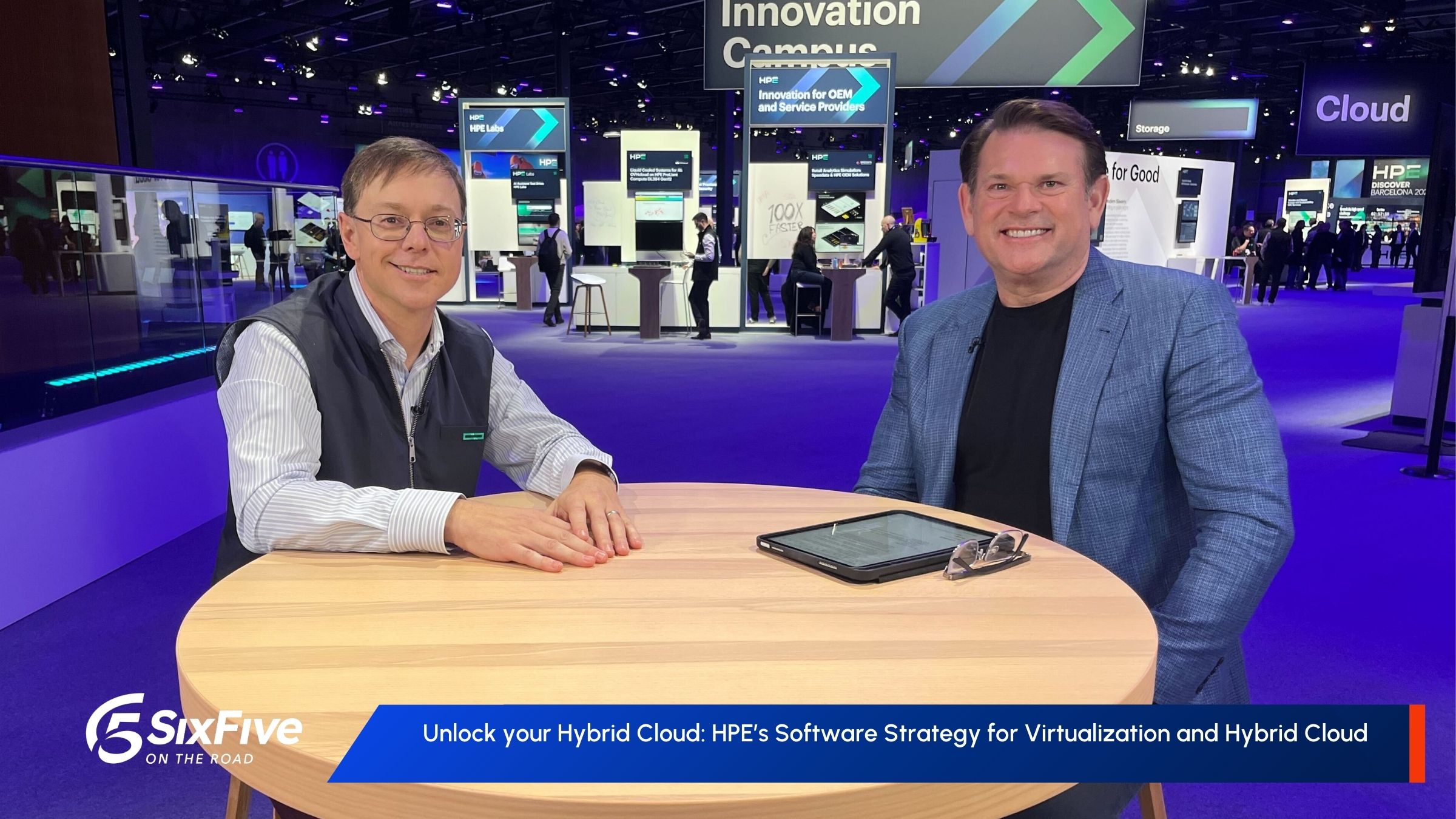
Unlock your Hybrid Cloud: HPE’s Software Strategy for Virtualization and Hybrid Cloud – Six Five In The Booth
Brad Parks, Chief Product / GTM Officer at HPE, joins David Nicholson to discuss HPE’s unified virtualization and hybrid cloud software strategy, Morpheus and CloudOps updates, and what’s next for VM Essentials and future integrations.
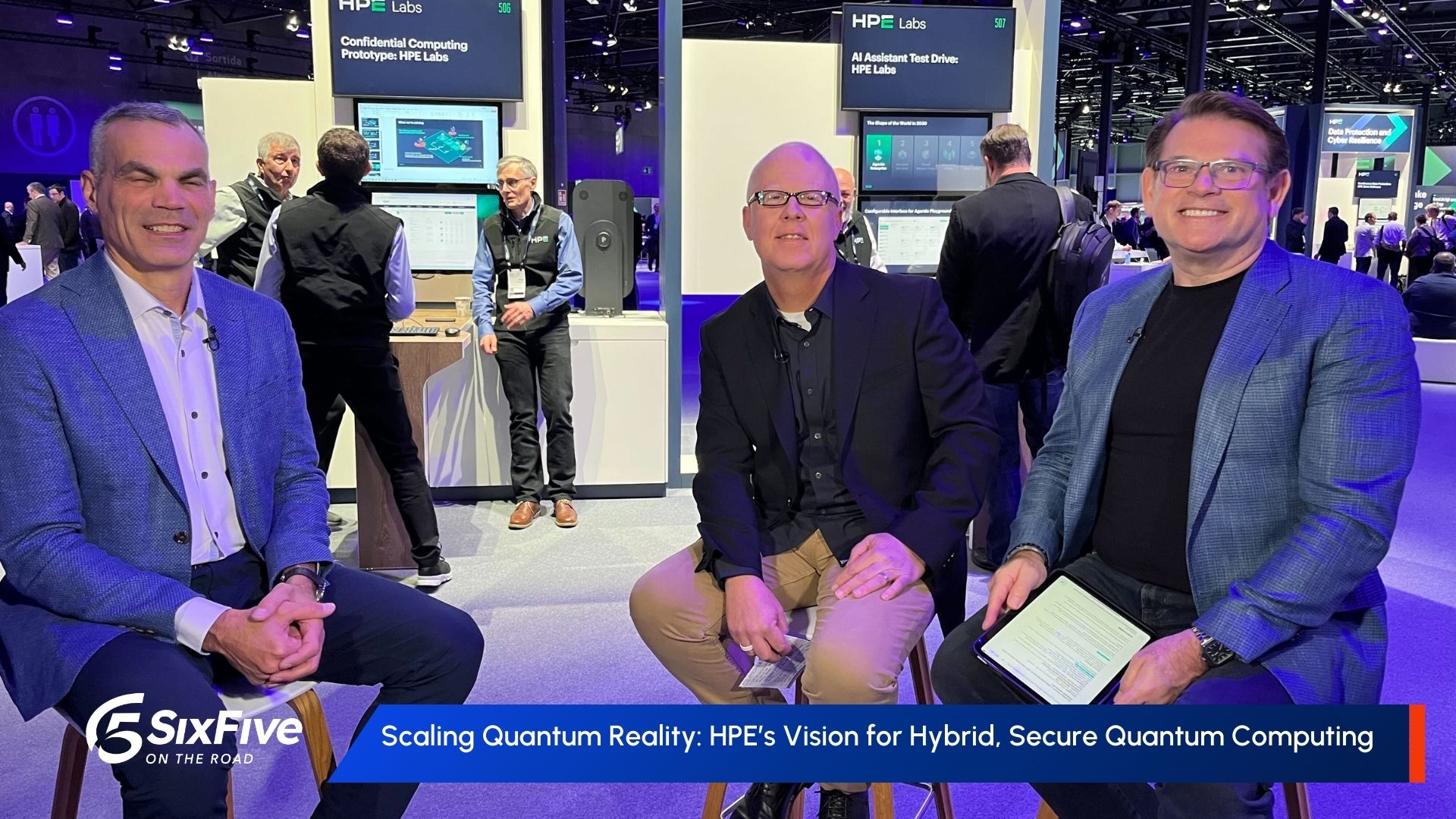
Scaling Quantum Reality: HPE’s Vision for Hybrid, Secure Quantum Computing - Six Five On The Road
Andrew Wheeler, HPE Fellow and Director at HPE Labs, joins the conversation to share how HPE’s Quantum Scaling Alliance is addressing quantum computing’s hardest challenge—scalability—and why hybrid and secure approaches are critical for enterprise success.
Other Categories
CYBERSECURITY
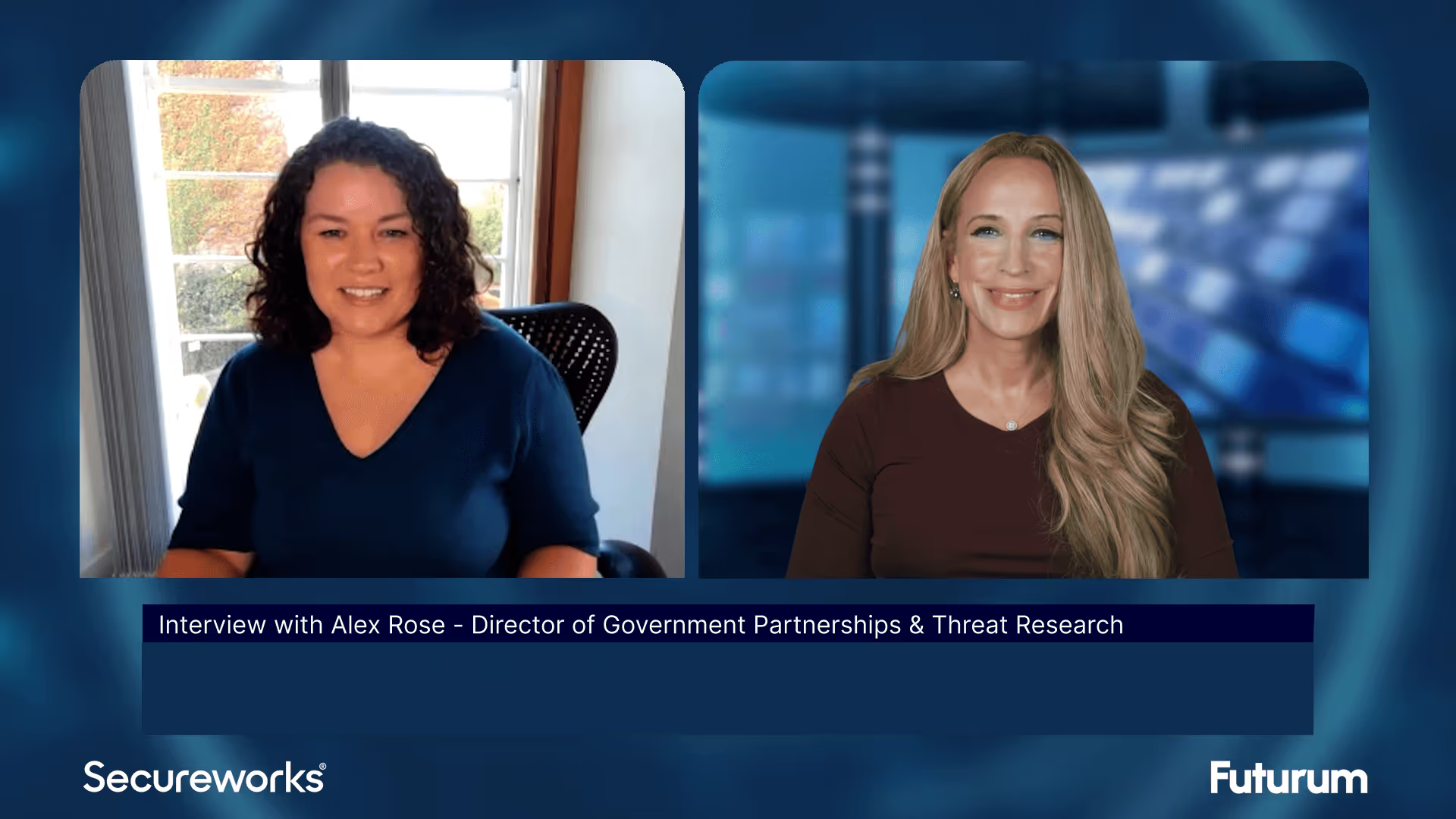
Threat Intelligence: Insights on Cybersecurity from Secureworks
Alex Rose from Secureworks joins Shira Rubinoff on the Cybersphere to share his insights on the critical role of threat intelligence in modern cybersecurity efforts, underscoring the importance of proactive, intelligence-driven defense mechanisms.
QUANTUM
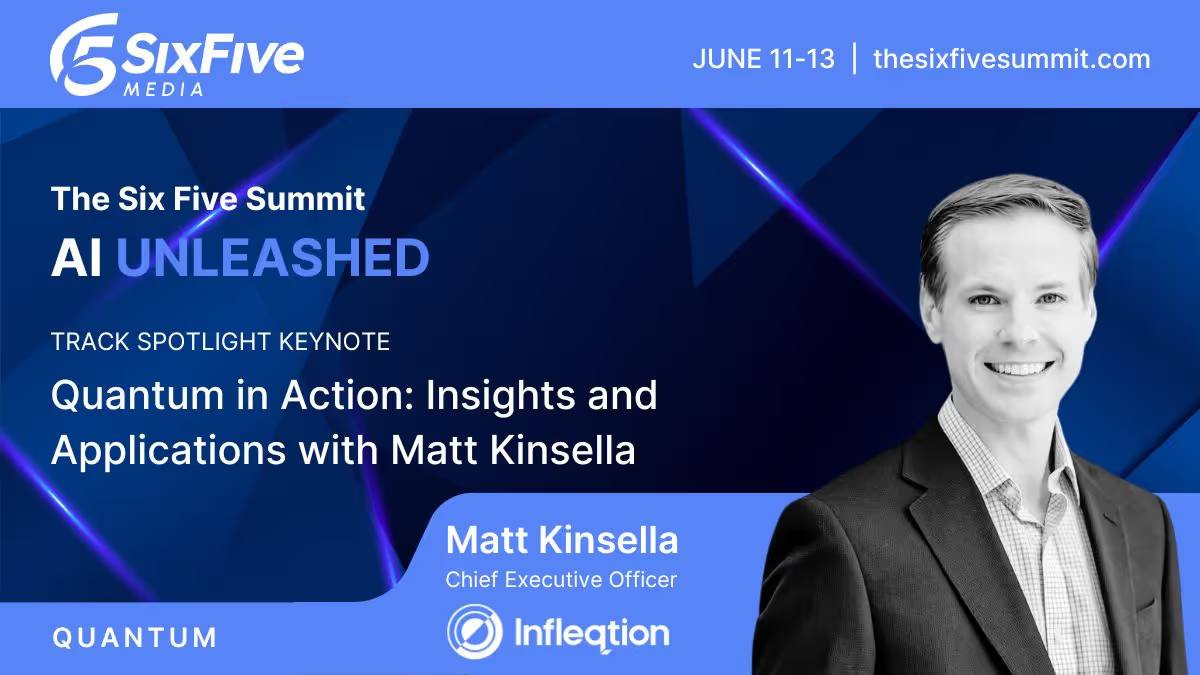
Quantum in Action: Insights and Applications with Matt Kinsella
Quantum is no longer a technology of the future; the quantum opportunity is here now. During this keynote conversation, Infleqtion CEO, Matt Kinsella will explore the latest quantum developments and how organizations can best leverage quantum to their advantage.
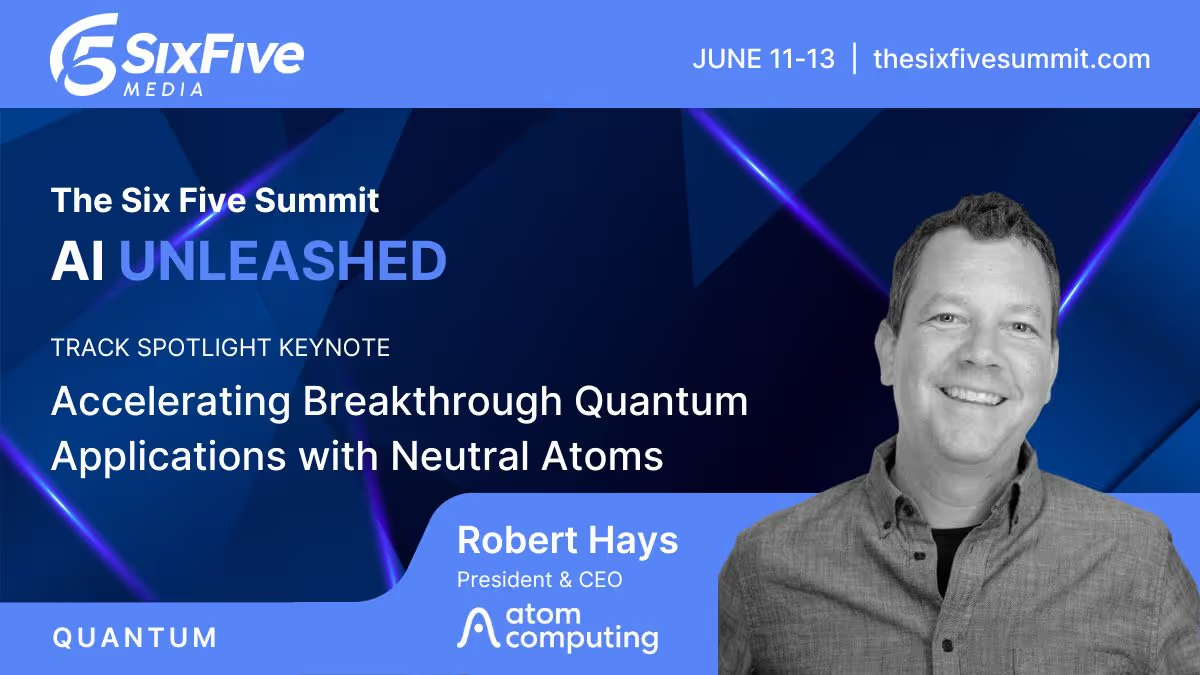
Accelerating Breakthrough Quantum Applications with Neutral Atoms
Our planet needs major breakthroughs for a more sustainable future and quantum computing promises to provide a path to new solutions in a variety of industry segments. This talk will explore what it takes for quantum computers to be able to solve these significant computational challenges, and will show that the timeline to addressing valuable applications may be sooner than previously thought.



